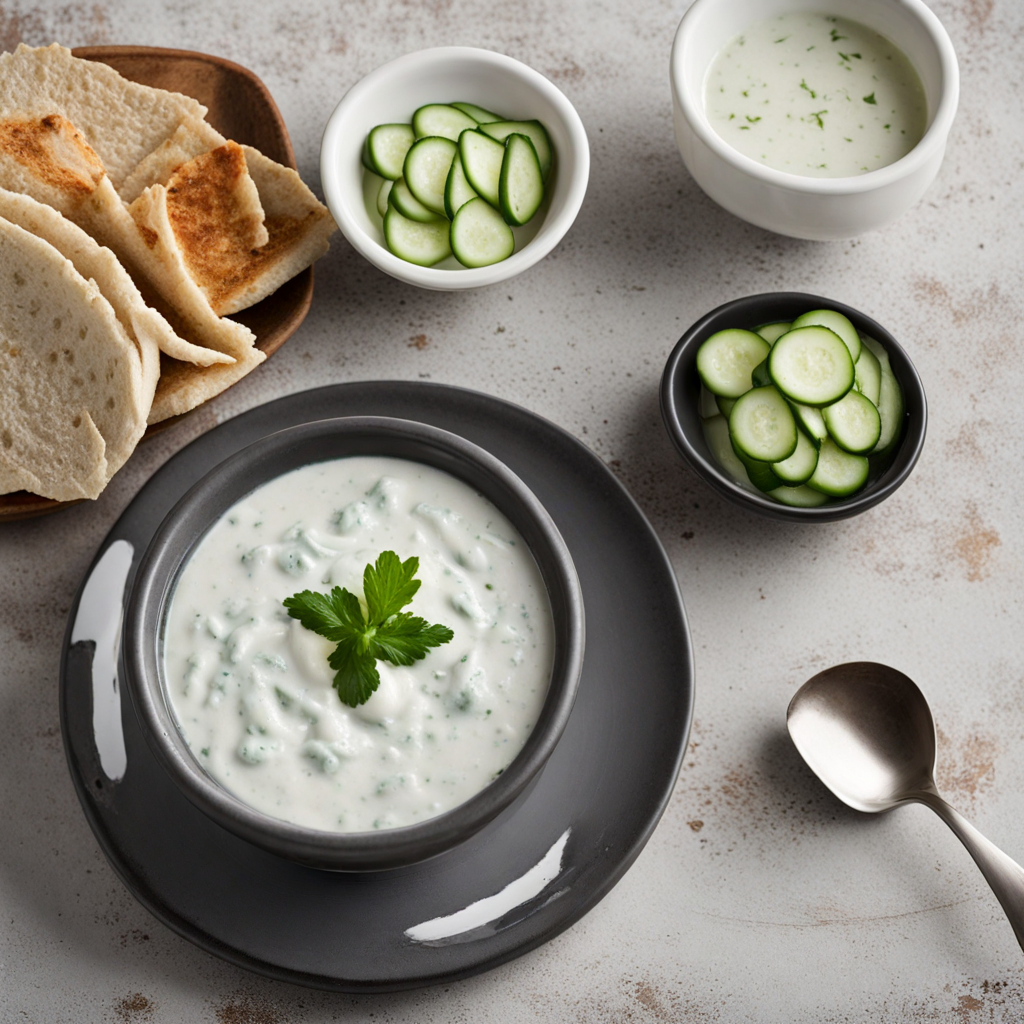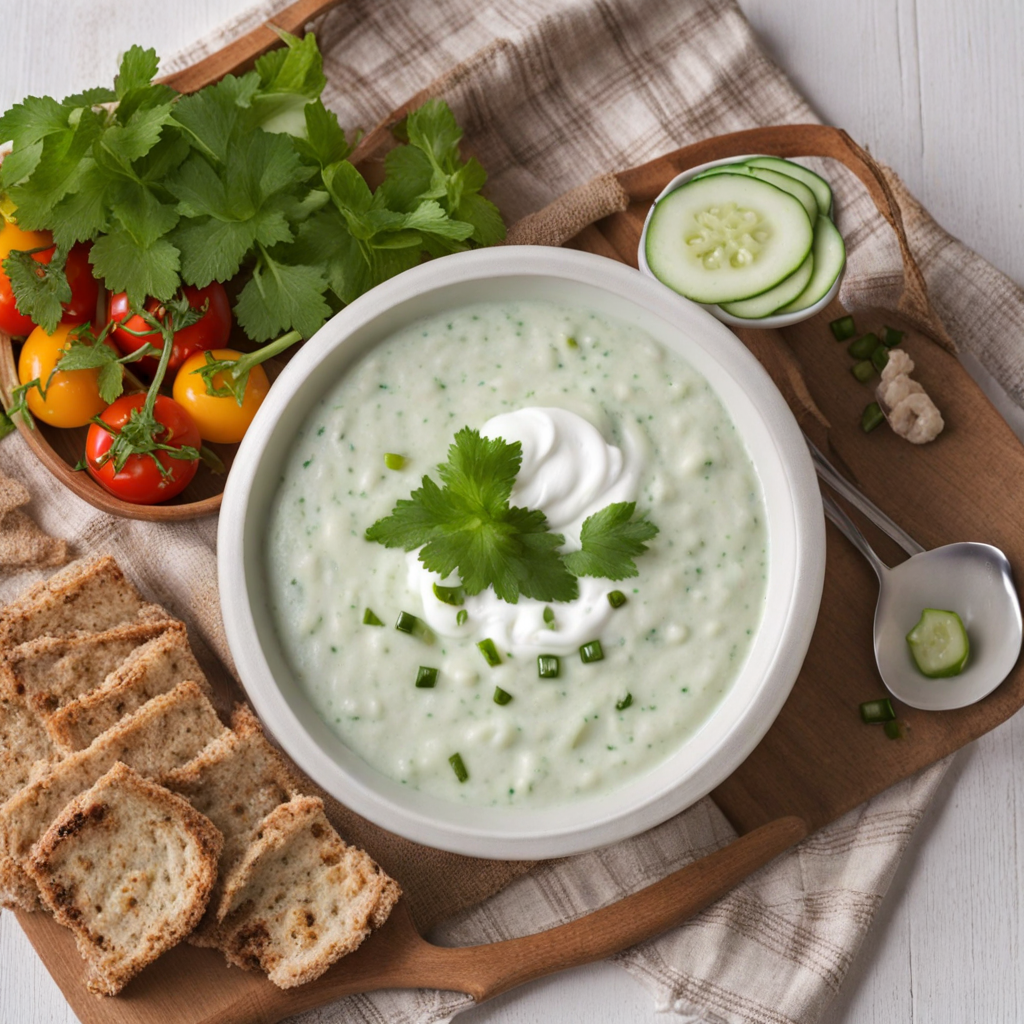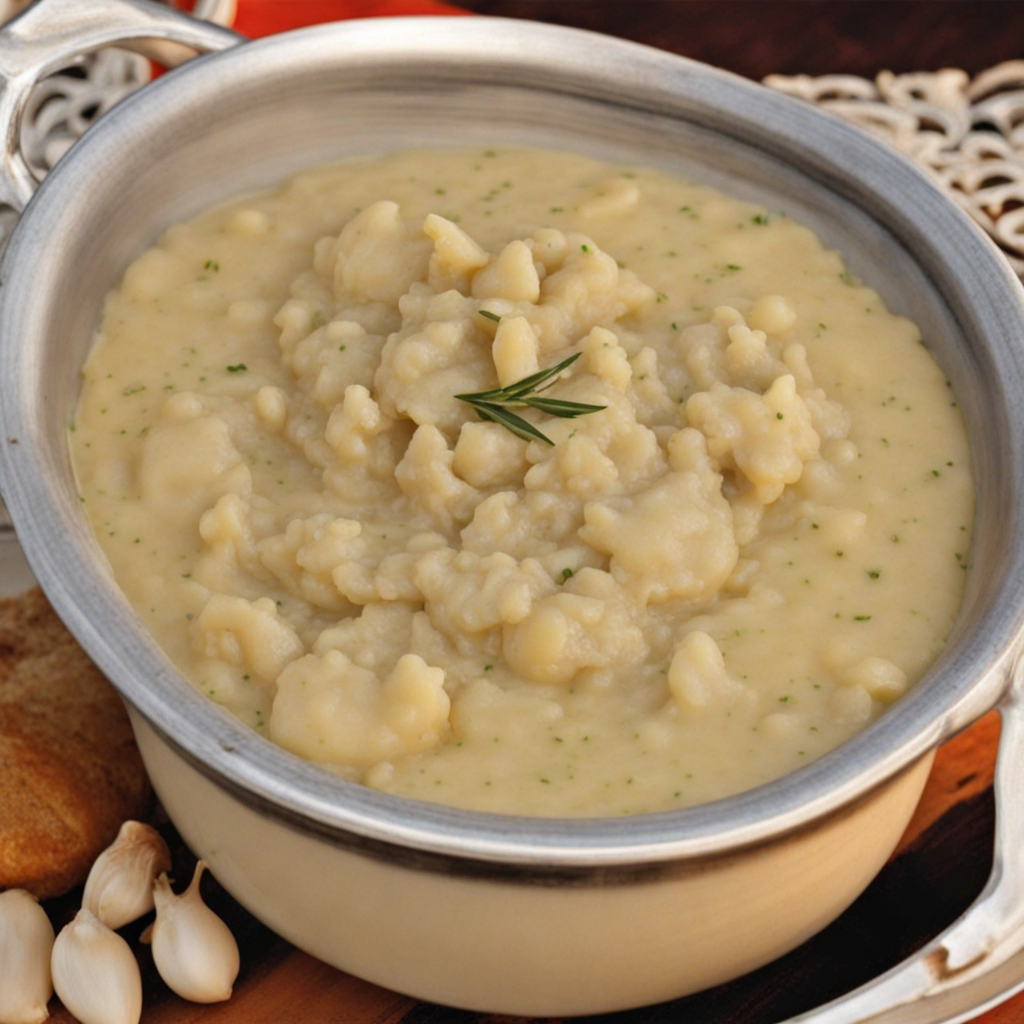Tarator
Tarator is a refreshing and creamy dish hailing from Cyprus, celebrated for its unique blend of flavors and textures. At its core, Tarator is a yogurt-based dip that combines finely grated cucumbers, crushed garlic, and a hint of olive oil. The yogurt provides a smooth and tangy base, while the cucumbers lend a crisp freshness, making each bite a delightful experience. Often garnished with a sprinkle of fresh dill or mint, this dish is not only visually appealing but also invigorating, perfect for warm weather or as an accompaniment to grilled meats and vegetables. The preparation of Tarator is simple yet rewarding, allowing the natural flavors of the ingredients to shine through. The cucumbers are typically salted before being added to the yogurt, drawing out excess moisture and intensifying their flavor. A touch of lemon juice can be added for an extra zing, balancing the richness of the yogurt with a citrusy brightness. This harmonious combination is what makes Tarator a versatile dish, ideal as an appetizer, side, or even as a light meal on its own. In Cyprus, Tarator is often enjoyed as part of a meze platter, where it can be paired with warm pita bread, olives, and various dips. Its cooling effect makes it a perfect counterpoint to spicier dishes, providing a soothing contrast that enhances the overall dining experience. With its wholesome ingredients and vibrant flavors, Tarator invites food lovers to explore the culinary traditions of Cyprus and discover a taste that is both comforting and invigorating.
How It Became This Dish
The History of Ταρατόρ: A Culinary Gem from Cyprus #### Origins Ταρατόρ, a beloved dish in Cypriot cuisine, has its roots in the broader Mediterranean and Middle Eastern culinary traditions, showcasing the island’s rich history of cultural exchange. The name “ταρατόρ” is derived from the Arabic word “tahrīr,” which means to “mix” or “blend.” This reflects the dish's key preparation method, where various ingredients come together to create a harmonious flavor profile. Historically, Cyprus has been a crossroads of civilizations, influenced by Greek, Turkish, and Arabic cultures. The island's strategic location in the eastern Mediterranean made it a melting pot of diverse culinary practices. While the exact origins of ταρατόρ are hard to pinpoint, it is widely believed that it evolved from similar dishes found in neighboring regions, particularly the Middle East. In Turkey, a similar sauce known as “tahini” is used in various recipes, while in Lebanon, “tahini” is also a staple component of the famous dish “hummus.” The Cypriot version of ταρατόρ typically features tahini as a base, blended with ingredients such as garlic, lemon juice, and water, resulting in a creamy, rich sauce. While the fundamental components remain consistent, regional variations have emerged, adding to the dish's complexity and charm. #### Cultural Significance In Cyprus, ταρατόρ is more than just a culinary delight; it is a symbol of cultural identity and heritage. The dish is often served as part of a meze platter, which is a traditional way of dining in Cyprus. A meze consists of a variety of small dishes, allowing diners to sample an array of flavors and textures. This communal style of eating reflects the Cypriot ethos of hospitality and togetherness, making ταρατόρ a perfect accompaniment to gatherings and celebrations. The preparation of ταρατόρ is not just a routine kitchen task; it is often a family affair. Generations of Cypriots have passed down their unique recipes, each adding a personal touch or secret ingredient. This transmission of culinary knowledge underscores the importance of food in Cypriot culture, where meals are seen as an opportunity to bond with loved ones and share stories. In addition to its role in family gatherings, ταρατόρ also holds significance in religious and seasonal festivities. During Lent, for example, when many Cypriots abstain from meat and dairy, ταρατόρ serves as a delicious and nutritious alternative. The dish’s plant-based ingredients align with the principles of fasting, making it a staple during this period. #### Development Over Time As Cyprus has evolved, so too has ταρατόρ. Over the decades, the dish has adapted to changing tastes and the availability of ingredients. In the 20th century, with the rise of globalization and the increasing popularity of Mediterranean cuisine worldwide, ταρατόρ gained newfound recognition beyond the island. Chefs and home cooks began experimenting with the traditional recipe, introducing variations that incorporated local produce and flavors. The use of fresh herbs, such as parsley or coriander, became popular in modern interpretations of ταρατόρ, adding a vibrant color and freshness to the dish. Additionally, some variations incorporate spices like cumin or paprika, further enhancing the flavor profile. These adaptations reflect a broader trend in contemporary Cypriot cuisine, where traditional dishes are reimagined to cater to modern palates while preserving their essence. The rise of health-conscious eating in recent decades has also influenced the perception of ταρατόρ. With an increasing emphasis on plant-based diets, this dish has found its place in the hearts of vegans and vegetarians alike. The use of tahini, rich in healthy fats and protein, coupled with the refreshing acidity of lemon juice, positions ταρατόρ as a nutritious choice that aligns with contemporary dietary preferences. Furthermore, the global food scene has embraced Mediterranean flavors, elevating dishes like ταρατόρ to prominence on international menus. Restaurants in major cities around the world have showcased Cypriot cuisine, offering travelers a taste of the island’s culinary heritage. This global interest has not only revitalized traditional recipes but has also encouraged chefs from Cyprus to promote their cultural heritage abroad. #### Conclusion Today, ταρατόρ remains an integral part of Cypriot identity, blending history, culture, and culinary artistry. Its journey from a humble, traditional dish to a celebrated component of global Mediterranean cuisine is a testament to the resilience and adaptability of Cypriot culinary heritage. As Cypriots continue to gather around tables, sharing stories and laughter over plates of meze, ταρατόρ stands as a delicious reminder of their rich history and enduring traditions. Whether enjoyed in a bustling taverna in Nicosia or prepared in the comfort of a family home, this dish encapsulates the spirit of Cyprus—a land where food is not only sustenance but a bridge connecting generations and cultures. In an age of rapid globalization, the preservation and celebration of traditional dishes like ταρατόρ are more important than ever. They serve as a culinary passport, inviting the world to experience the flavors and stories of Cyprus, while ensuring that the legacy of this beloved dish continues to thrive for future generations.
You may like
Discover local flavors from Cyprus







